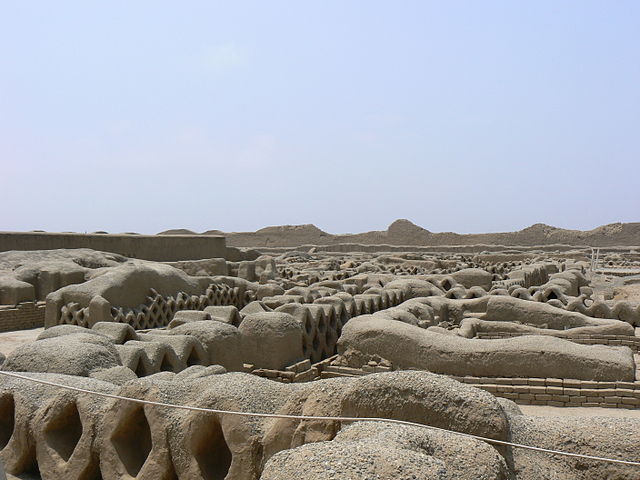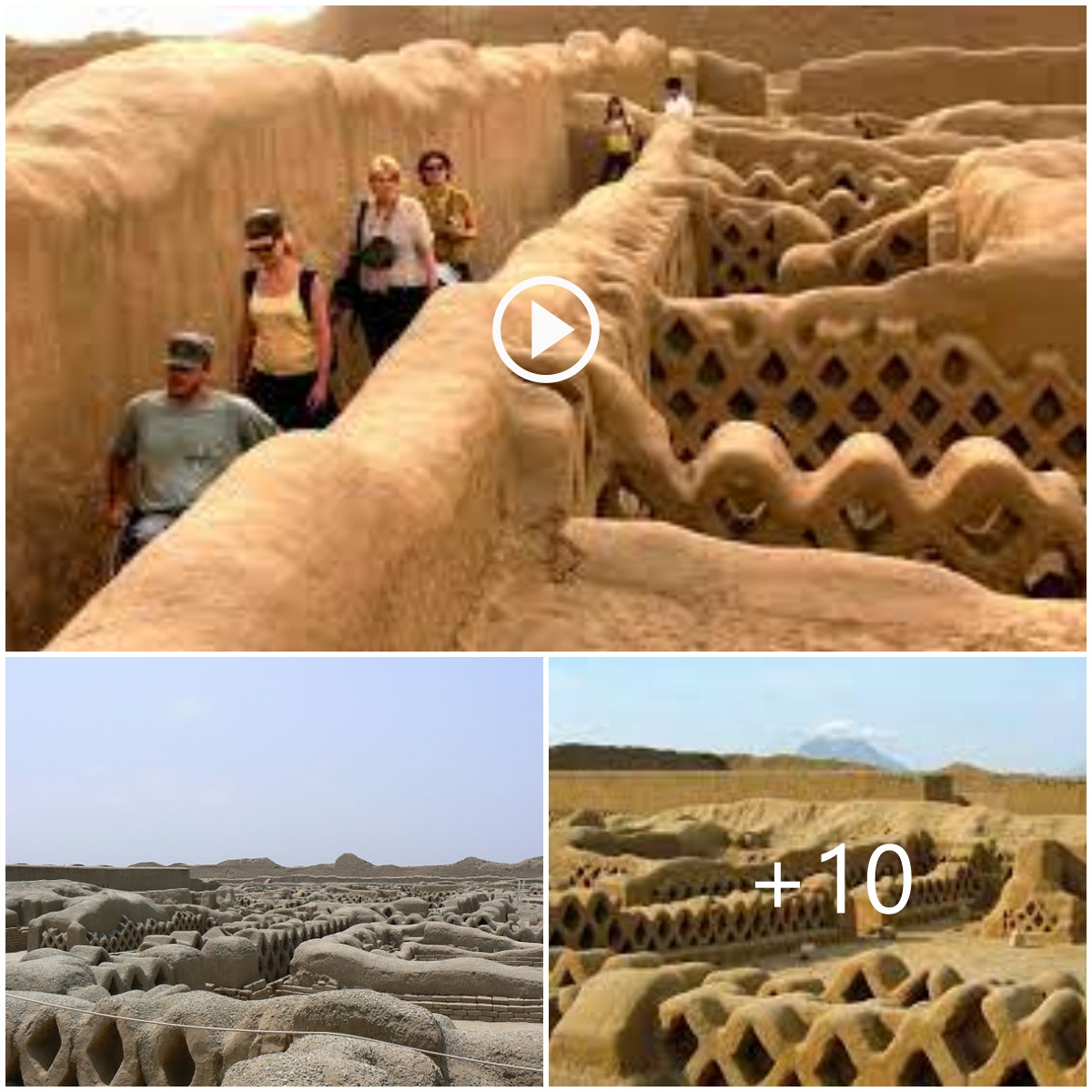Chan Chan, which was built up over about 450 years by the Chimú in Peru’s Moche Valley beginning in the 11th century A.D., was the largest adobe city in the world.
An aerial view of Peru’s Moche Valley shows Chan Chan, a massive city constructed beginning in the early eleventh century A.D. by the rulers of the Kingdom of Chimor, leaders of a people known as the Chimú. Chan Chan sprawled across more than seven square miles and had a population of as many as 40,000. Its dense urban core contained nine separate walled palace enclosures, two of which are seen here.The Moche River Valley in northern Peru was an unlikely place to build a city. Though barely 1,000 feet from the Pacific Ocean, the valley received less than a tenth of an inch of rain per year. Nevertheless, in about A.D. 1000, a people known as the Chimú selected a location in the valley some four miles north of the river and set about making it habitable. Called Chimor in colonial accounts, and now commonly known as Chan Chan, it became the largest urban center in the Americas.
Peru Chan Chan Map(Ken Feisel)What enabled the Chimú to build a city in this unpopulated coastal desert was their tremendous engineering skill, which they used to create an extensive network of irrigation canals that channeled snowmelt from the Andes Mountains into the Moche River. What drove the Chimú was the desire for a place to call their own. The valley had no one to conquer and evict, no existing structures to raze, and no troubled history to erase. “Chan Chan is an invented city in an artificially irrigated valley,” says archaeologist Gabriel Prieto of the University of Florida. “The Chimú transformed the landscape, created an entirely new society, and became the most powerful rulers in coastal Peru. Chan Chan was an experiment that worked for almost five hundred years.”
The Chimú built their new capital, which spread over more than seven square miles, in a way that distinguished them from other Andean cultures and was intended to reflect their particular social system. “There were enormous social differences and a clear recognition of social distinctions in Chimú society,” says archaeologist Jerry Moore of California State University, Dominguez Hills. “What is so important about Chan Chan is that it shows a very different kind of architectural style from other Andean societies.” Even their myths reveal how, for the Chimú, division between classes was at the center of their worldview. One myth says that royal and noble males were spawned from a gold egg, noblewomen from a silver egg, and everyone else from a copper egg. “I like the egg myth because it suggests that the Chimú understood that social and political inequality is ‘baked in’ to humanity from the beginning,” says anthropologist Robyn Cutright of Centre College.
Hits: 0


